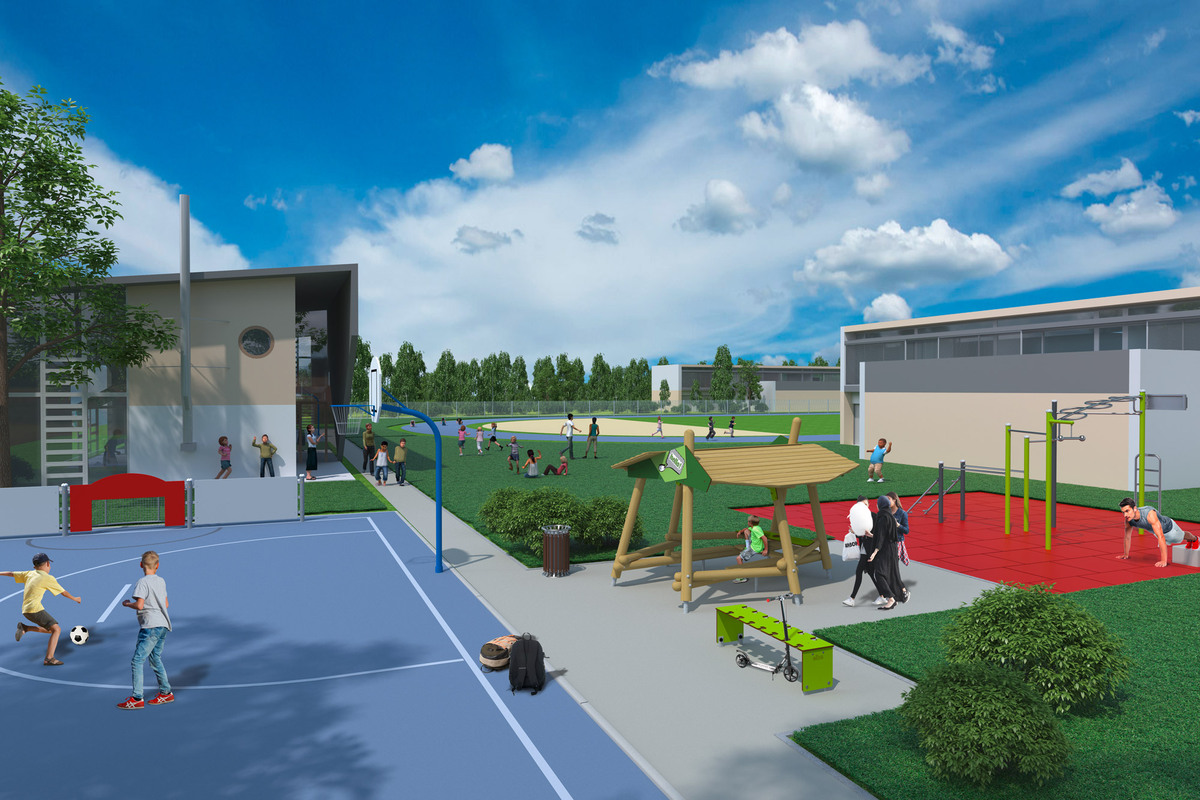A school playground design is exciting and successful when all pupils feel comfortable there and that their needs are being met. A creatively designed school playground should therefore have at least three basic areas: An area that encourages movement, a lounge area for meeting, chatting and resting and one, for experimenting. The playground equipment included will be age-appropriate offering the correct level of challenge without being too demanding. It is also essential to incorporate a sensible flow, linking the zones in the design: From paths to bridges to ascents and descents – we include the required level of creativity here. When planning the layout, it makes sense to arrange the zones sensibly. They can vary in size and adapted to the conditions of the school grounds and the interests and wishes of the pupils. This can be achieved, among other things, through a consultation process involving the children.
Table of contents
Recommended play zones for a sensible school playground design
Play, move and let off steam
The size of the activity areas depends on the number of pupils and the size of the grounds, but in general these zones should be as large as possible when designing the playground. Important elements are playground equipment and areas for running and romping around. These can be contoured with e.g. mounds and also paved areas for ball games or skateboarding. No matter which style is chosen for the area, the existing features and surfaces must offer variety. For activity areas, the surface is an important component. A safer surface fall protection; such as wood chips or gravel, needs to be under equipment. Paths and areas with high user loads should be paved. Bridges, beams or ropes can be used to connect individual pieces of equipment and mounds, and ascents and descents can be used to create versatile and exciting play paths. Climbing facilities are particularly popular. Whether rope structures or climbing rocks, these are also wonderfully suitable for relaxing. However, such playground equipment should be age-appropriate and able to be used by many children.
Children can also exercise during physical education lessons, but once a week is far too little. Team games in particular, are a way of letting off steam and should also be made available outside of physical education classes. When children and young people sit together for a long time, conflicts and aggression may arise and can be dealt with in this way. Pupils learn that they don’t always win in a playful environment and can compete with each other without anyone coming to harm. Opening up the sports fields, such as football pitches or running tracks during the break, would therefore be a benefit for the wellbeing of the children.
Places to discover creativity and pure nature
For many children, experiencing nature is not always available. City children in particular are affected in this way. Some children actually think that fruit grows in the supermarket, for example, and not on a bush or tree. When designing the playground, designers should therefore think of opportunities that offer the opportunity to experience and understand nature. Only in this way can children develop an environmental awareness, get to know animals and plants and recognise relationships. A nature-oriented playground design can help and provide many benefits.
How about a school garden or a school pond, for example? Such natural elements allow joint classroom activities and outdoor projects. Sometimes children just want to get their hands dirty. That is why it is worthwhile – especially in all-day schools – to design areas where pupils can experiment in a natural environment. Be it with sand, water, wood or small stones – children can give free rein to their imagination in a natural schoolyard design, create small works of art and playfully deal with the natural elements. It would also be conceivable to have outdoor workshops that provide tools and materials for project work and the like.
Meeting points for interaction and rest
Those who sit in class for hours often have a great need to talk during the breaks. Girls in particular often use the school toilet as a meeting place, for lack of a better opportunity. Therefore, providing exciting recreation areas for small and larger groups are an essential part of school playground design. It is important during longer breaks or free periods to fulfil the need for areas where they can relax and to meet friends – also with other classes – to chat or just to relax. Walls and stairs are suitable for this. However, communal seating groups with a variety of seating elements, for example made of wood, stone or other materials, would be ideal.
Playground equipment can also feature as meeting places, such as flat net structures. Niches and corners that offer pupils a little privacy and a quiet environment are suitable as places of retreat – these can be planted areas, hollows or mounds, and there are no limits to this kind of creativity in the design of the playground. Such places of rest have great social and educational value. In principle, it would also be of benefit to include areas which offer the option for outdoor teaching, such as amphitheatres or similar.
Click here for Part 1: “Creative schoolyard design – schools need movement!

